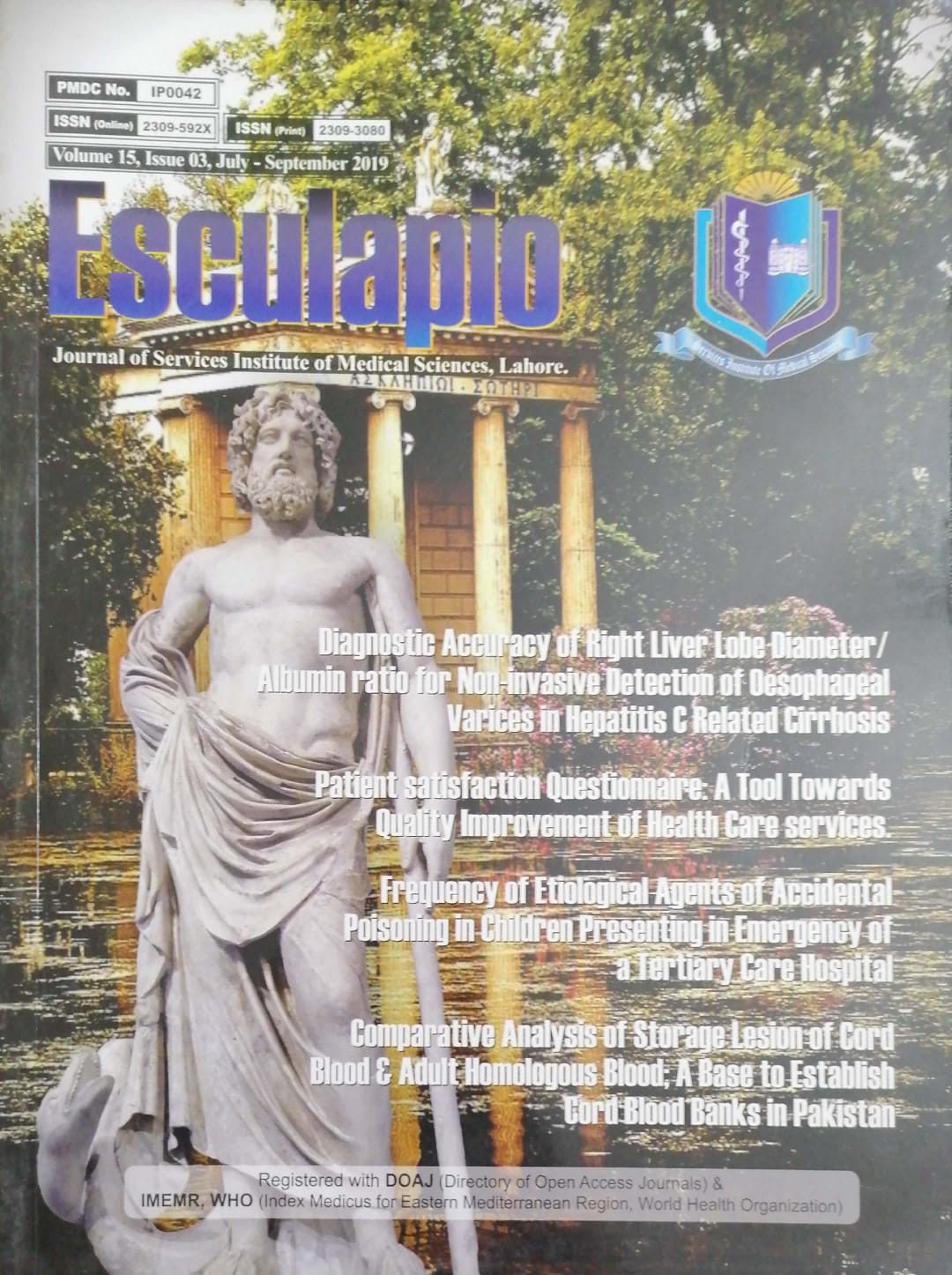Evaluation of Risk Malignancy Index (RMI) As Diagnostic Tool to Distinguish Between Malignant and Benign Adnexal Masses, while Taking Histopathlogy as Gold Standard
DOI:
https://doi.org/10.51273/esc19.715318Keywords:
histopathology, RMI, malignant, benign, adnexalAbstract
Objective: To determine the diagnostic accuracy of risk of malignancy index (RMI) to distinguish
between benign and malignant adnexal masses taking histopathology as gold standard.
Methods: This was an institutional based cross sectional study conducted at new radiology
department of Services hospital Lahore, during the months of June to December 2016. Total of
165 females of age 25-70 years with adnexal masses on ultrasonography and admitted in
gynecology ward for surgical exploration and histopathological diagnosis were included in the
study, by using non probability consecutive technique.Ultrasound was performed by expert
consultant radiologist. Preoperative serum CA125 levels and menopausal status was also noted.
RMI was calculated for every patient. All the collected data was entered and analyzed on SPSS
version 14.0.1.
Results: The mean age of patients was 48.78±12.63 years. In total 165 females included,
80(48.48%) were premenopausal and 85(51.52%) were postmenopausal. The sensitivity of RMI
was 89.06%, specificity of 96.04% and the diagnostic accuracy was 93.33% taking
histopathology as gold standard.
Conclusions: ThAccording to our study results the RMI is reliable tool with high sensitivity,
specificity and diagnostic accuracy values to distinguish between benign and malignant adnexal
masses taking histopathology as gold standard.










